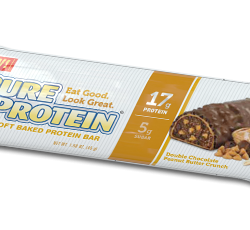Reverse Pyramid Training (RPT)
Overview
RPT, or Reverse Pyramid Training, is a training method popularized by Leangains. The RPT template can be applied to any program, really, but it is most commonly used in conjunction with high intensity, low volume routines. RPT is an excellent protocol to follow on a cut because it allows you to lift maximum weight with the most amount of energy possible. This leads to more muscle activation without subjecting your muscles to additional stress while eating at a deficit.
With a traditional pyramid setup, you start with a light weight and a large number of reps. After warming up, you increase the weight, and decrease the reps on each subsequent set. Finally you will do your last set with the highest weight and the lowest reps. This training method may seem counter-intuitive to some (myself included), but it has been widely accepted as the “norm” in weight training for years.
With RPT, you work backwards (thus, reverse). First, warm up with a weight that is comfortable enough to not induce fatigue, but noticeable enough to prime you for the rest of your training. After warming up, begin your first set with the highest amount of weight, working with the lowest number of reps. For your second set, you will decrease the working weight, and increase the number of reps. Repeat this again for your final set.
The amount of weight you shed is totally up to you, but many people either suggest shedding percentages (10%-20% a set), or poundage. Personally, I shed 20 pounds off of big lifts (squats, deadlifts primarily), and 10 pounds off of everything else.
An example of a RPT set:
Deadlift:
Warmup – 8-10 reps @ 200lb
Set 1 – 4 reps @ 400lb
Set 2 – 5 reps @ 380lb
Set 3 – 6 reps @ 360lb
Remember, the amount you shed is totally up to you. You should listen to your body, but not let it totally dictate the entire session. You should be pushing yourself with every single rep! Remember: during a cut, you want to activate the most muscle as possible with the least amount of strain. Working in the low rep, high intensity range allows you to activate a ton of muscle with minimal amounts of damage.
You can use RPT for virtually any lifting protocol, whether it be powerlifting, powerbuilding, or bodybuilding.
An example RPT full body 3 day split routine for a beginner:
Monday:
Deadlift:
Warmup – 8 – 10 reps @ 40% 1RM (ex. 135lb)
Set 1 – 4-5 reps @ 90% 1RM (ex. 225lb)
Set 2 – 5-6 reps @ Shed 20lb (ex. 205lb)
Set 3 – 6-7 reps @ Shed 20lb (ex. 185lb)
Pullover
Warmup – 8-10 reps @ 40% 1RM (ex. 90lb)
Set 1 – 4-5 reps @ 90% 1RM (ex. 150lb)
Set 2 – 5-6 reps @ Shed 10lb (ex. 140lb)
Set 3 – 6-7 reps @ Shed 10lb (ex. 130lb)
Bodyweight Chinup
Set 1 – 7-8 reps
Set 2 – 6-7 reps
Set 3 – 5-6 reps
Wednesday:
Bench Press:
Warmup – 8-10 reps @ 40% 1RM (ex. 90lb)
Set 1 – 4-5 reps @ 90% 1RM (ex. 150lb)
Set 2 – 5-6 reps @ Shed 10lb (ex. 140lb)
Set 3 – 6-7 reps @ Shed 10lb (ex. 130lb)
Bodyweight Dips
Set 1 – 7-8 reps
Set 2 – 6-7 reps
Set 3 – 5-6 reps
Bodyweight Pullups
Set 1 – 7-8 reps
Set 2 – 6-7 reps
Set 3 – 5-6 reps
Friday:
Squat:
Warmup – 8 – 10 reps @ 40% 1RM (ex. 120lb)
Set 1 – 4-5 reps @ 90% 1RM (ex. 200lb)
Set 2 – 5-6 reps @ Shed 20lb (ex. 180lb)
Set 3 – 6-7 reps @ Shed 20lb (ex. 160lb)
Overhead Press:
Warmup – 8-10 reps @ 40% 1RM (ex. 60lb)
Set 1 – 4-5 reps @ 90% 1RM (ex. 100lb)
Set 2 – 5-6 reps @ Shed 10lb (ex. 90lb)
Set 3 – 6-7 reps @ Shed 10lb (ex. 80lb)
Bent Over Rows
Warmup – 8-10 reps @ 40% 1RM (ex. 60lb)
Set 1 – 4-5 reps @ 90% 1RM (ex. 100lb)
Set 2 – 5-6 reps @ Shed 10lb (ex. 90lb)
Set 3 – 6-7 reps @ Shed 10lb (ex. 80lb)
You will notice that there is some bodyweight training in there as well. Ideally, you would be doing weighted Pullups, Chinups, and Dips.. but most beginners will be unable to cope with the intensity, if they can do bodyweight movements at all. If you are unable to do bodyweight chins/dips/pullups, you have some options available. Diamond Pushups are a good alternative to building some strength for dips. You can also use an assisted Pullup machine that adds a ballast weight and makes the movement easier. Finally, you can try doing negative reps.
Negative reps are awesome, and frequently used by experienced lifters to stimulate more growth. The negative portion of the movement in this case is the lowering of your body, on all three of these exercises. For Pullup/Chinup, stand on a box or chair to start at the top of the lift, and then hold yourself up at the top, and slowly begin to lower your body down. When you reach the bottom, simply put your feet on the box or chair, and hoist yourself up again to do another rep. The same works for dips, place your hands on the dip bars, jump up to the top position, and then slowly lower yourself down.
RPT is an excellent protocol for those doing a cut, intermittent fasting, or looking to get some strength gains in a limited amount of time. I have personally used RPT for a long time and still use it while cutting, since it is hard to beat the amount of activation you will receive for the amount of energy expended. If you are trying to be a better man, look no further. Turn that pyramid upside down and start lifting!









